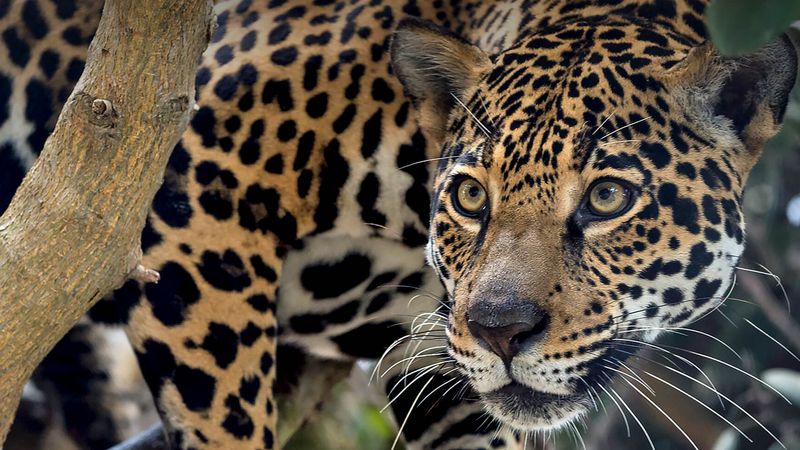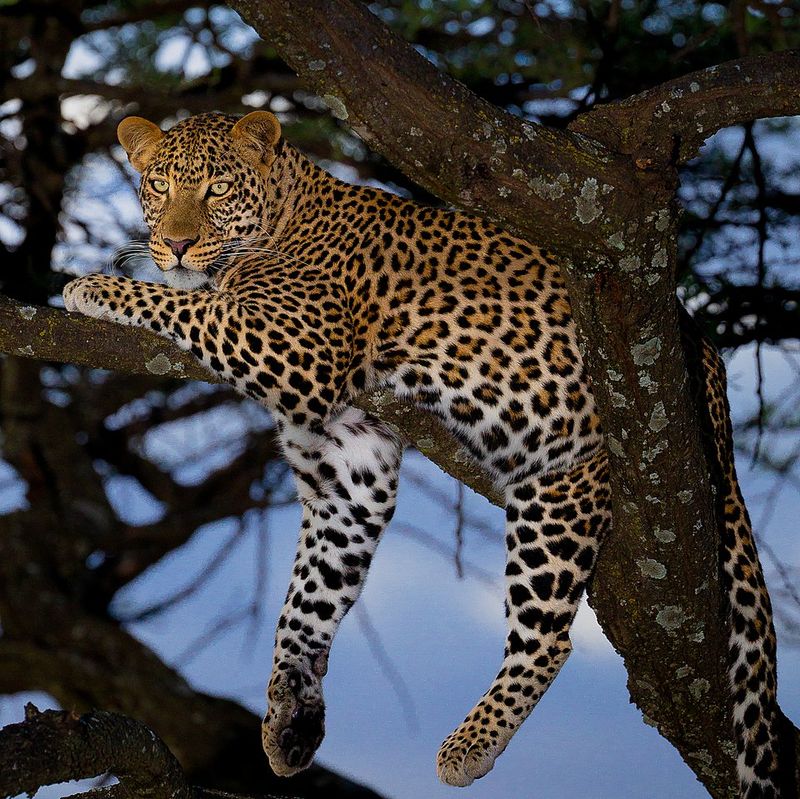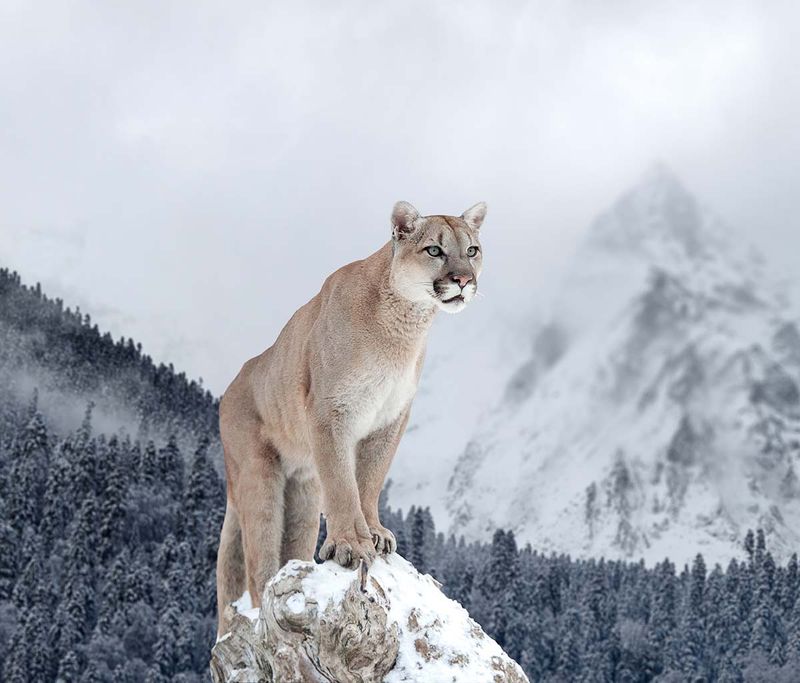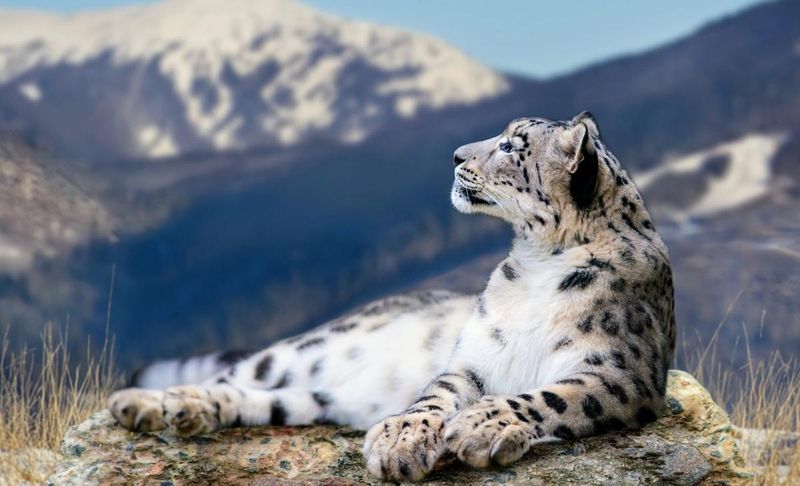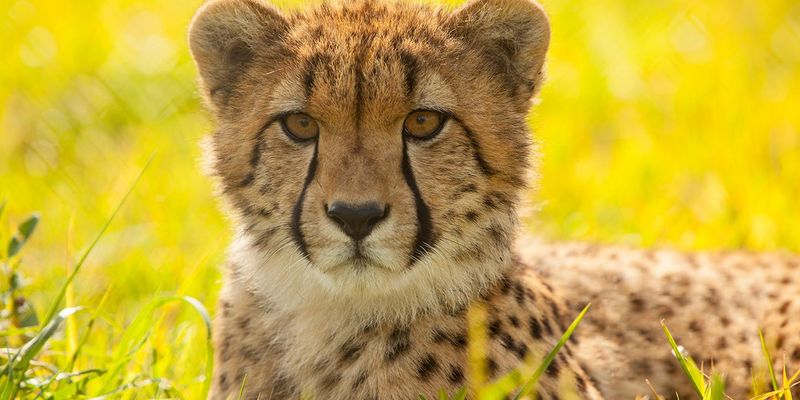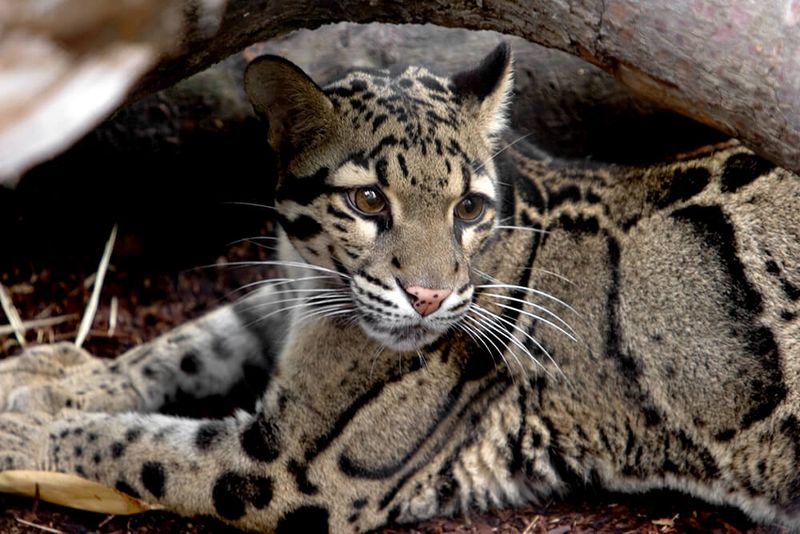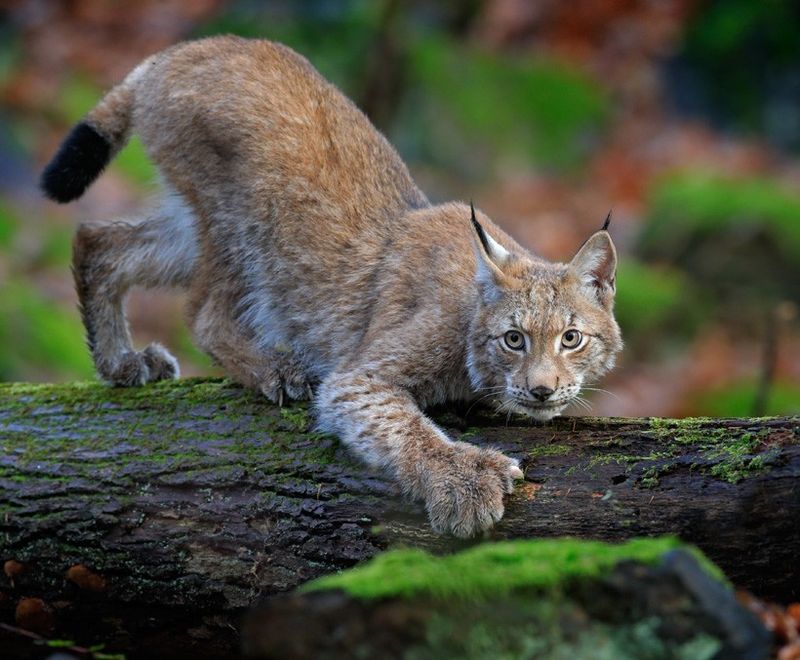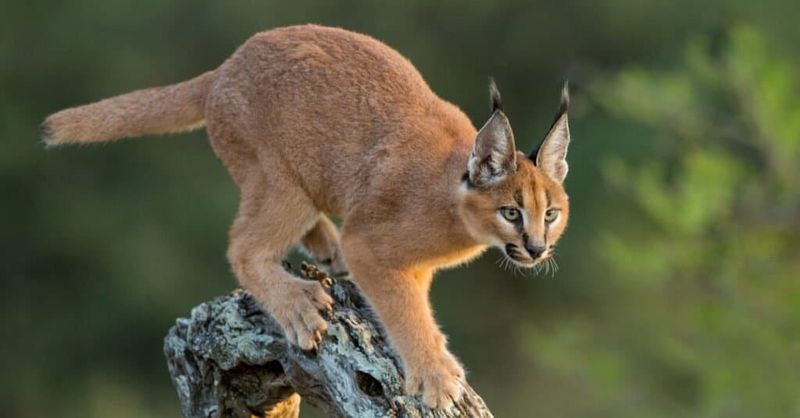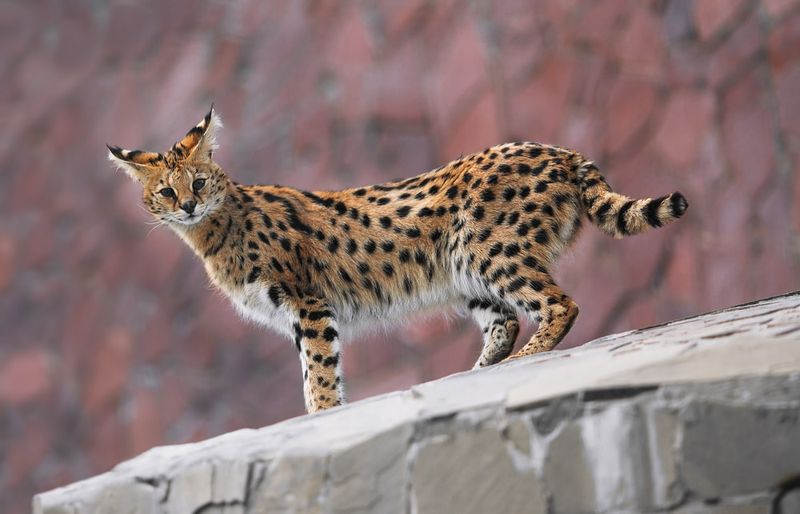📖 Table of Content:
Big cats command attention not just for their size and strength, but for their solitary way of life. Most species prefer to roam alone, relying on their own instincts rather than the support of a group. This independence shapes their behavior, territory, and hunting strategies.
Solitary lifestyles reduce competition for food and mating opportunities. These cats often patrol vast territories, marking boundaries and avoiding conflict whenever possible. Encounters with others of their kind are usually brief and purposeful, especially outside of mating season.
Their hunting success is rooted in stealth, patience, and precision. By operating alone, they can move silently through their environments, unseen by prey until it’s too late. From dense jungles to open savannas, their solitary approach has proven remarkably effective for survival.
1. Tiger
Tigers reign as the largest wild cats on earth, with males weighing up to 660 pounds. These striped hunters maintain territories spanning 40-75 square miles, rarely interacting with other tigers except during brief mating periods. Each tiger’s stripe pattern is unique, like a human fingerprint.
They’re powerful swimmers who enjoy cooling off in rivers and lakes during hot weather – a trait uncommon among big cats. Tigers hunt primarily at night, relying on their excellent night vision and striped camouflage to ambush prey. A single tiger can consume up to 88 pounds of meat in one sitting, then may not eat again for days.
2. Jaguar
As the top feline predator in the Americas, jaguars possess a bite force capable of puncturing skulls and cracking shells with ease. Their wide-ranging territories are fiercely protected through scent markings and territorial scrapes. Few animals dare to challenge their authority within these boundaries.
Unlike many cats, jaguars love water and often hunt caimans and fish in rivers. Their name comes from the indigenous word ‘yaguar,’ meaning ‘he who kills with one leap.’ Males and females only meet briefly to mate, spending the rest of their lives alone. Their rosette spots provide perfect camouflage in dappled forest light, allowing them to stalk prey unseen before delivering a lethal bite to the skull.
3. Leopard
Highly adaptable, leopards flourish in a wide range of environments, including mountains, forests, and semi-urban areas. They often stash their kills in trees, using their powerful limbs to keep meals away from scavengers. Depending on food availability, a leopard’s territory may be small and dense or stretch across vast, rugged terrain.
Their rosette spots blend perfectly into dappled light, making them nearly invisible when stalking prey. Female leopards raise cubs alone for about two years before the young disperse to find their own territories. These cats are so secretive that researchers often struggle to study them, even in areas with healthy leopard populations.
4. Mountain Lion
From the forests of Canada to the rugged southern tip of Chile, mountain lions roam farther than any other wild cat in the Americas. Commonly called cougars or pumas, these elusive tan predators steer clear of humans and one another—except for fleeting moments during mating season. Males fiercely guard their territory, leaving behind scratch piles and scent markings as signs of their presence.
Despite their large size, mountain lions cannot roar – they purr like house cats and make distinctive screaming calls during mating season. These cats can jump 15 feet vertically and 40 feet horizontally in a single bound. Their preferred hunting technique involves stalking prey from behind and delivering a powerful neck bite that severs the spinal cord.
5. Snow Leopard
Snow leopards roam the remote mountain ranges of Central Asia, thriving in elevations up to 18,000 feet where few other predators venture. Their thick fur and wide paws act as natural snowshoes, allowing them to traverse deep snow and steep terrain with ease.
These elusive cats have the longest tail of any big cat relative to body size – up to 3 feet long – which provides balance when leaping across rocky slopes. Snow leopards can jump distances six times their body length when pouncing on prey. Researchers estimate fewer than 7,000 remain in the wild. Their solitary nature is reinforced by the harsh mountain environment, where they mark territories with scrapes and scent but rarely encounter other snow leopards outside breeding season.
6. Cheetah
Unlike most solitary big cats, male cheetahs may form small groups called coalitions, while females remain alone except when raising cubs. Built for speed, cheetahs can go from 0 to 60 mph in just three seconds—the fastest of any land animal.
A cheetah’s body is built entirely for speed, with a flexible spine that acts like a spring and semi-retractable claws that provide traction like cleats. They hunt during daylight hours when other big cats typically rest. Female cheetahs raise cubs for about 18 months before the young disperse. Their distinctive tear marks help reduce glare from the sun during high-speed chases and may also function as a built-in sight mechanism, similar to a rifle scope.
7. Clouded Leopard
In the dense jungles of Southeast Asia, the clouded leopard prowls with a skill set unlike any other big cat. With the longest canine teeth for their skull size—comparable to ancient saber-tooths—they are equipped for both stealth and strength. Their beautiful cloud-patterned coats offer near-perfect camouflage among the forest’s dappled light. And when it comes to climbing, they’re in a league of their own, hanging from branches with their strong tails and even descending trees headfirst thanks to their remarkable 180-degree rotating ankles.
Their territories remain poorly understood due to their secretive nature. Clouded leopards hunt both on the ground and in trees, feeding on monkeys, deer, and birds. Scientists consider them an evolutionary link between big cats and small cats, with a unique classification that highlights their special position in the feline family tree.
8. Eurasian Lynx
Eurasian lynx rule as Europe’s largest wild cat, with adults weighing up to 80 pounds – twice the size of their North American cousins. Their distinctive tufted ears act as sound amplifiers, helping them detect prey movements through snow or dense vegetation. These cats maintain large territories up to 100 square miles in northern forests, marking boundaries with urine and scratch marks.
Their wide, fur-covered paws serve as natural snowshoes during harsh winters. Lynx can detect prey from over 250 feet away thanks to exceptional hearing and vision. Their short tails and long legs are adaptations for moving through deep snow when hunting their favorite prey: roe deer and hares. Despite their size, these cats remain so elusive that they’re rarely spotted even in areas with healthy populations.
9. Caracal
With their striking black ear tufts and smooth tawny coats, caracals are often mistaken for lynxes, earning them the nickname “desert lynx,” though they aren’t true lynxes. These medium-sized cats roam the dry landscapes of Africa and Asia, covering territories that can stretch up to 20 square miles. Their most impressive skill? Their powerful leaps, which allow them to snatch birds right out of the air—sometimes even catching multiple doves in a single jump.
Ancient Egyptians trained caracals for hunting and featured them in their artwork and religious practices. Female caracals raise their kittens alone in rock crevices or abandoned burrows. Despite living in harsh environments, these resourceful hunters can survive without drinking water, getting moisture from their prey. Their name comes from the Turkish word ‘karakulak,’ meaning ‘black ear.’
10. Serval
Servals possess the longest legs relative to body size of any cat, allowing them to see over tall grasses and make incredible vertical leaps. These specialized hunters catch up to 90% of their prey attempts – the highest success rate among all cats. Their enormous ears can detect rodents moving underground, which they then pounce on with precision from heights up to 10 feet.
A serval’s spotted pattern provides excellent camouflage in the grasslands and savannas of Africa. Females raise litters of 2-4 kittens alone, teaching them hunting skills before they establish their own territories at about one year old. Despite their medium size (30-40 pounds), servals successfully drive off much larger predators like jackals when defending their kills or protecting their young.


